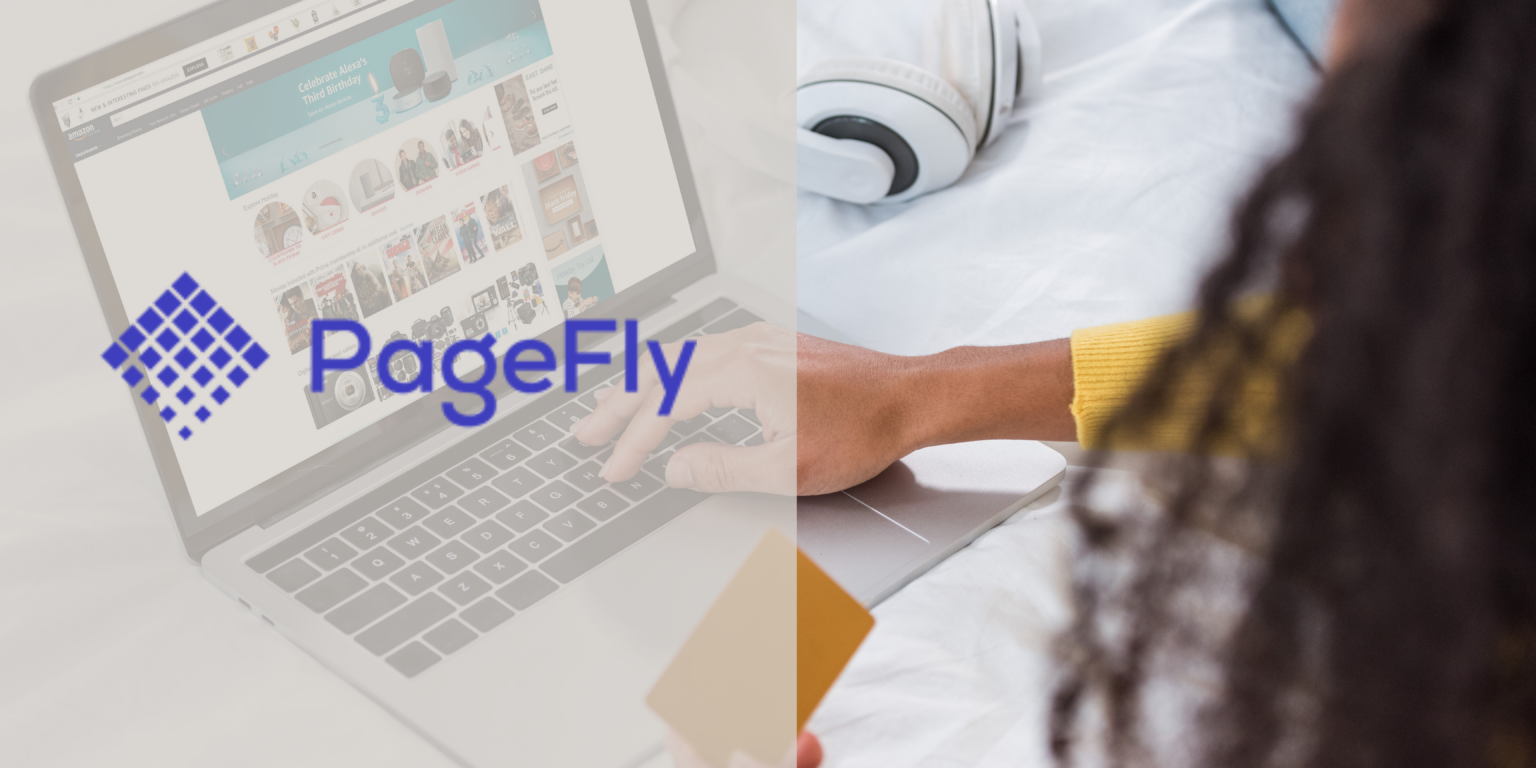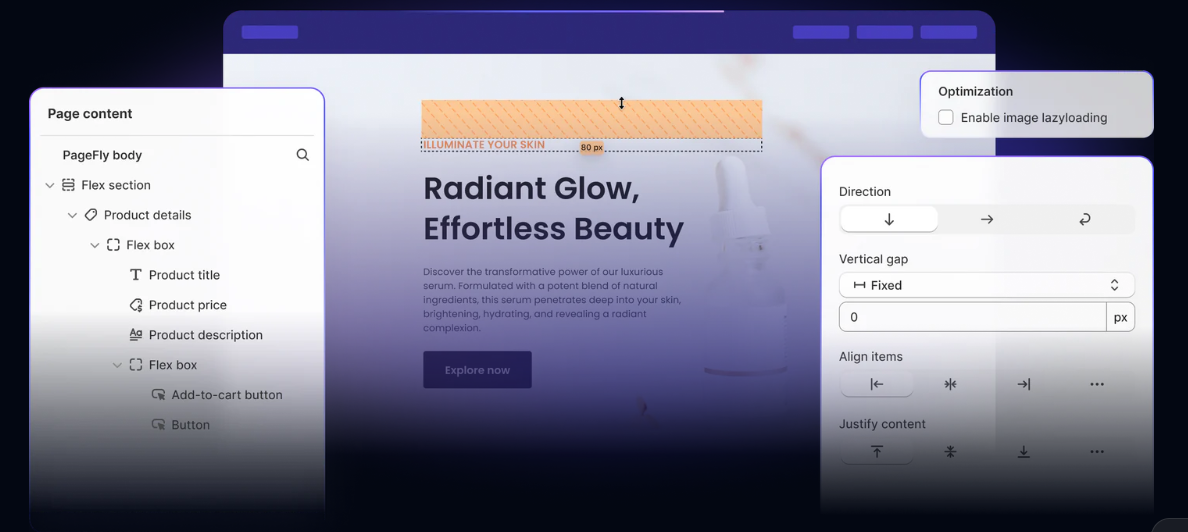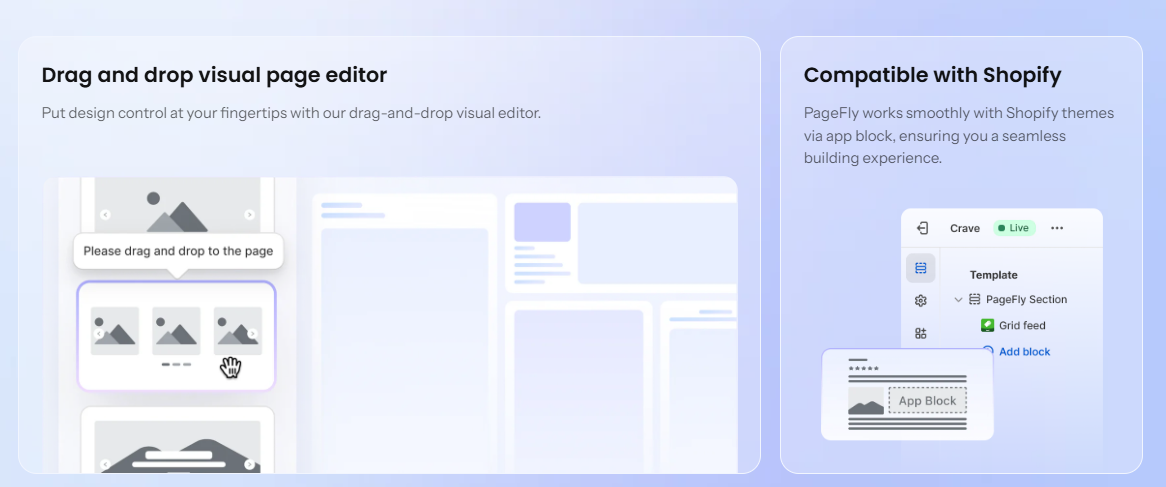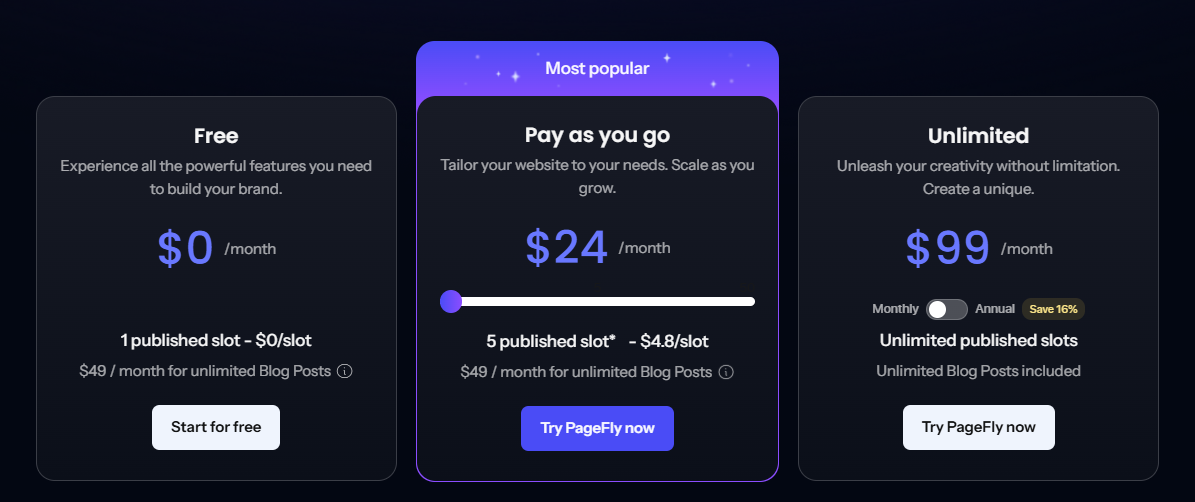PageFly for Shopify: The Ultimate Page Builder Review

Running a Shopify store means competing in a crowded marketplace, where design and user experience can make or break conversions. While Shopify offers a variety of themes, many merchants quickly realize they need more flexibility to create custom, high-converting pages. That’s where PageFly comes in—a powerful drag-and-drop page builder designed to give store owners full creative control over their Shopify pages without requiring coding skills.
But how does PageFly compare to other Shopify page builders? Is it worth the investment? In this guide, I’ll explore PageFly’s features, pricing, pros and cons, and how it stacks up against competitors. Whether you’re a beginner or an experienced Shopify seller, this breakdown will help you decide if PageFly is the right tool to elevate your store’s design and boost sales. Let’s dive in!
What is PageFly?

PageFly is a powerful Shopify page builder app designed to help store owners create high-converting, fully customized pages without any coding knowledge. Whether you need to design product pages, landing pages, homepages, or even blog pages, PageFly offers an intuitive drag-and-drop interface, making it easy to craft Shopify pages exactly the way you envision. It’s the perfect solution for merchants looking to break free from Shopify’s built-in theme limitations and gain full creative control over their store’s design.
Unlike standalone website builders, PageFly is developed exclusively for Shopify, ensuring seamless integration with the platform’s system, themes, and eCommerce functions. This allows merchants to maintain Shopify’s core features while unlocking advanced customization options. Instead of being restricted by Shopify’s default theme settings, users can modify layouts, add unique design elements, and optimize their store’s look without compromising on performance.
PageFly Features: What Makes It Special?

PageFly isn’t just another Shopify app—it’s packed with powerful features that make it a go-to choice for thousands of Shopify store owners. Here’s what makes PageFly stand out:
1. Drag-and-Drop Page Building
PageFly’s intuitive drag-and-drop editor lets you create pages without touching a single line of code. Unlike Shopify’s default theme editor, which has limited customization, PageFly allows you to move, resize, and modify elements easily. Whether you’re designing a product page or a promotional landing page, you have complete control. You can add text blocks, images, buttons, videos, and even interactive elements with just a few clicks.
For those who want even more control, PageFly also supports custom CSS and JavaScript, allowing for deeper customization beyond the standard drag-and-drop interface.
2. Customization Beyond Shopify Themes
One of the biggest frustrations with Shopify themes is their rigidity. PageFly eliminates this issue by providing fully customizable templates, allowing you to build your store your way. You can tweak layouts, add unique sections, and even include animations or interactive elements. Shopify themes, even premium ones, often limit how much you can modify without touching code, but PageFly lets you break those barriers.
With PageFly, you’re not just restricted to tweaking existing themes—you can build entirely unique pages tailored to your brand’s aesthetics and conversion goals.
3. Mobile-Responsive Design
In today’s eCommerce world, mobile users are just as important—if not more—than desktop users. PageFly ensures your pages look stunning on any device with mobile-responsive design features. You can even tweak the layout for different screen sizes to ensure a flawless experience.
Unlike some page builders that automatically adjust for mobile but often result in clunky layouts, PageFly gives you full control over how your pages appear on mobile, tablet, and desktop separately. You can hide or adjust elements for different screen sizes to improve user experience.
4. Speed Optimization for Better Performance
A slow website can kill your conversion rates. PageFly takes performance seriously, offering optimized code, lazy loading, and lightweight design elements to keep your pages running fast without sacrificing design quality. Many page builders tend to slow down Shopify stores due to excessive code, but PageFly ensures that your pages load quickly to provide the best user experience.
Page speed is crucial for SEO rankings as well, and PageFly’s clean code structure helps improve search engine visibility.
5. A/B Testing and Conversion Rate Optimization (CRO)
What if you could test different layouts to see which one drives more sales? PageFly allows integration with Shopify’s A/B testing tools so you can compare different page designs and optimize for the highest conversions. This is a major plus for businesses that want to maximize their sales potential through data-driven decisions.
6. Advanced Elements and Third-Party Integrations
PageFly supports a wide range of elements, including countdown timers, testimonial sliders, accordions, and pricing tables. It also integrates seamlessly with other Shopify apps like Klaviyo, Omnisend, and Mailchimp to enhance marketing automation and customer engagement.
This means you can embed email capture forms, integrate payment solutions, and add trust badges without needing a developer.
7. Global Styling for Consistency
Consistency in design builds trust. With global styling, you can ensure that your colors, fonts, and buttons remain uniform across all pages—saving time and maintaining branding consistency. This eliminates the need to manually adjust each page to match your brand’s aesthetic.
8. Seamless Shopify Integration
Unlike standalone website builders, PageFly is built exclusively for Shopify. This means you don’t have to worry about compatibility issues, and you can manage everything directly from your Shopify dashboard.
Since it operates within Shopify’s environment, it also ensures that inventory, checkout, and Shopify’s core functionalities remain intact, preventing technical conflicts.
If you want to explore PageFly’s features in detail, visit the PageFly Official Website to learn more about how it can transform your Shopify store.
PageFly Pricing: How Much Does It Cost?

PageFly offers flexible pricing plans to cater to businesses of all sizes, from startups to large-scale eCommerce stores. Whether you’re just starting or looking for advanced customization options, PageFly provides a cost-effective way to build and optimize your Shopify pages. Here’s a detailed breakdown of its pricing plans:
1. Free Plan ($0/Month)
For new Shopify store owners or those testing out the platform, PageFly’s Free Plan is a great starting point. It provides access to all core features but comes with some limitations:
✅ Includes essential drag-and-drop tools for page building.
✅ Access to all PageFly elements and integrations.
✅ Allows one published page (slot)—perfect for testing.
❌ Limited scalability—you can’t publish multiple pages.
❌ No advanced analytics or priority support.
💡 Who is this plan for?
If you’re just experimenting with Shopify and want to test PageFly’s functionality without a financial commitment, the Free Plan is a great option. However, as your store grows, you may quickly outgrow the single-page limitation.
2. Pay-As-You-Go Plan ($24/Month)
For businesses that require more flexibility but don’t need unlimited pages, PageFly offers a Pay-As-You-Go Plan at $24/month. This plan includes:
✅ Five published slots, meaning you can create and publish up to five pages.
✅ Full access to PageFly’s design tools and Shopify integrations.
✅ Each additional page slot costs $4.80.
✅ Mobile-responsive design for all pages.
❌ Not ideal for large stores needing unlimited pages.
💡 Who is this plan for?
This plan is ideal for small to medium-sized businesses that want more flexibility than the free plan offers but don’t need unlimited pages. If you’re running a few key landing pages or product pages, this is a cost-effective way to enhance your store’s design without overspending.
3. Unlimited Plan ($99/Month)
For serious Shopify store owners who require full customization and unlimited scalability, the Unlimited Plan at $99/month is the best option. It provides:
✅ Unlimited published slots—create as many pages as you need.
✅ Unlimited blog posts—great for content-driven stores.
✅ Full access to all PageFly elements, templates, and integrations.
✅ Faster page speeds and better optimization tools.
✅ Priority customer support for quicker issue resolution.
💡 Who is this plan for?
This plan is perfect for large eCommerce businesses, agencies, and high-traffic stores that require multiple custom pages. If you frequently run marketing campaigns, product launches, or landing pages, this plan ensures unlimited creative freedom.
Pros and Cons of PageFly
Pros
- Easy-to-Use Drag-and-Drop Builder
- Free Plan Available
- High Customization & Flexibility
- Fast Loading & SEO Optimization
- Seamless Shopify Integration
Cons
- Limited Free Plan
- Learning Curve for Beginners
- Extra Costs for Additional Slots
- No Built-In A/B Testing
- Dependence on Shopify
Pros of PageFly
Easy-to-Use Drag-and-Drop Builder
- PageFly’s intuitive drag-and-drop editor allows anyone to build custom Shopify pages without coding skills.
Free Plan Available
- Unlike many competitors, PageFly offers a completely free plan, making it accessible for beginners and small businesses.
High Customization & Flexibility
- With CSS, JavaScript, and Liquid code access, advanced users can modify every aspect of their store’s design.
Fast Loading & SEO Optimization
- PageFly ensures clean code and optimized performance, leading to faster page speeds and improved SEO rankings.
Seamless Shopify Integration
- Built specifically for Shopify, PageFly works flawlessly with Shopify themes, apps, and third-party tools like Klaviyo, Loox, and Judge.me.
Cons of PageFly
Limited Free Plan
- While PageFly’s free plan is great for testing, it only allows one published page, which may not be enough for growing stores.
Learning Curve for Beginners
- Though user-friendly, PageFly has many advanced features, which can feel overwhelming for complete beginners.
Extra Costs for Additional Slots
- In the Pay-As-You-Go plan ($24/month), extra published pages cost $4.80 per slot, which can add up.
No Built-In A/B Testing
- Unlike Shogun, PageFly does not offer built-in A/B testing, requiring third-party tools for split testing.
Dependence on Shopify
- PageFly is exclusively for Shopify, meaning you cannot use it for WordPress, WooCommerce, or other platforms.
Comparative Analysis: How Does PageFly Stack Up?

PageFly vs. GemPages
Both PageFly and GemPages offer robust drag-and-drop editors, extensive customization options, and responsive design. However, key differences set them apart:
Ease of Use
- PageFly has a more intuitive and user-friendly interface, making it ideal for beginners.
- GemPages has a broader set of features, but this also means a steeper learning curve.
Pricing
- PageFly offers a free plan, making it a great starting point for new store owners.
- GemPages does not have a free plan, requiring a paid subscription from the start.
Templates
- GemPages boasts a larger template library, offering a variety of pre-designed pages.
- PageFly provides more in-depth customization, allowing you to modify designs without limitations.
Performance
- PageFly pages load faster due to cleaner code and better optimization.
- GemPages pages can sometimes experience slower performance due to bloated code.
Integration
- Both tools integrate with Shopify apps, but PageFly’s integrations tend to be smoother with third-party services.
Winner?
If you’re looking for an affordable, easy-to-use, and highly customizable Shopify page builder, PageFly is the better option. However, if you prefer a larger template selection and don’t mind paying for a premium experience, GemPages is a strong alternative.
PageFly vs. Shogun
Shogun is positioned as a premium Shopify page builder with advanced features tailored for high-level users. Here’s how it compares to PageFly:
Advanced A/B Testing
- Shogun offers built-in A/B testing, allowing merchants to test different page designs.
- PageFly does not have built-in A/B testing, but you can integrate third-party tools.
Price Difference
- Shogun starts at $39/month, making it significantly more expensive than PageFly’s $24/month plan.
- PageFly is more affordable while still offering powerful features.
Ease of Use
- Shogun has a steeper learning curve due to its advanced features.
- PageFly is more beginner-friendly, making it easier for new Shopify store owners.
Customization
- Both tools offer deep customization, but PageFly provides greater flexibility with CSS/JavaScript modifications.
SEO & Performance
- PageFly’s pages load faster because of cleaner code.
- Shogun’s pages can sometimes be slower due to complex scripts and additional functionalities.
Winner?
If you have a large budget and need built-in A/B testing, Shogun might be the better choice. However, for most Shopify merchants looking for an affordable, highly customizable, and high-performing solution, PageFly is the clear winner.
PageFly vs. Zipify Pages
Zipify Pages is a Shopify page builder specifically designed for high-converting sales funnels and direct response marketing. Here’s how it stacks up against PageFly:
Marketing & Sales Focus
- Zipify Pages is built for high-converting funnels, focusing on upsells, one-click purchases, and landing pages.
- PageFly is more versatile, allowing users to create any type of page beyond just sales funnels.
Ease of Use
- PageFly’s interface is more intuitive for general eCommerce design.
- Zipify Pages is optimized for direct response marketing, meaning it may not be as flexible for all types of stores.
Pricing
- Zipify Pages is one of the most expensive options, starting at $67/month.
- PageFly’s premium plan costs $99/month but includes unlimited page slots, making it more cost-effective for larger stores.
Prebuilt Templates
- Zipify Pages offers prebuilt, ready-to-go sales funnel pages specifically for marketing campaigns.
- PageFly provides a broader customization experience, giving users more control over design.
Winner?
If you’re running a high-volume store and need aggressive sales funnels, Zipify is a solid choice. However, if you’re looking for an affordable, flexible page builder that works for all types of pages, PageFly is the better option.
Final Verdict: Is PageFly Worth It?
Absolutely! PageFly is one of the best Shopify page builders, striking the perfect balance between affordability, customization, and ease of use. Whether you’re launching a new store or optimizing an existing one, PageFly empowers you to create high-converting pages—without the need for coding or hiring a developer.
With its drag-and-drop interface, vast template library, and seamless Shopify integration, PageFly makes customization effortless. You can design product pages, landing pages, homepages, and blog pages tailored to your brand. Plus, its mobile responsiveness, fast loading speeds, and built-in conversion elements—like countdown timers and call-to-action buttons—help enhance the shopping experience and boost sales.
Still unsure? Start with PageFly’s free plan and explore its features firsthand. You’ll quickly see why thousands of Shopify merchants rely on it to elevate their stores. And if you need more advanced options, PageFly offers flexible paid plans with additional customization capabilities.
Your Shopify store needs more than just great pages—it needs a powerful sales funnel! Learn how to build one that maximizes conversions right here.
